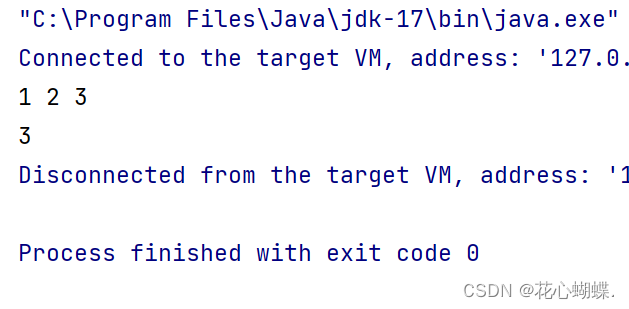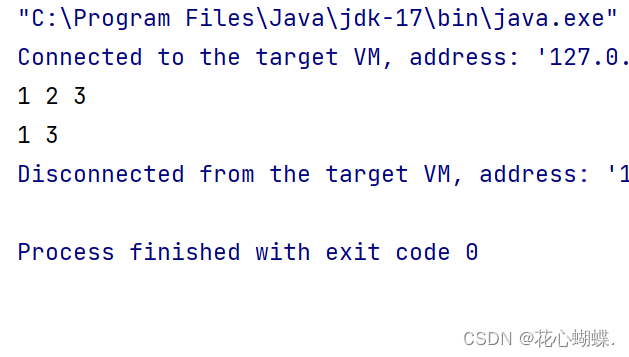在介绍ArrayList之前, 我们需要先了解List.
List是一个接口,它继承于Collection接口(Collection又继承于最顶层的接口Iterable). 从数据结构的角度来看,List就是一个线性表(Linear List),即n个具有相同类型元素的有限序列, 在该序列上可以执行增删查改等操作.
注意: List是一个接口,不能直接用来实例化. 在集合框架中, ArrayList类和LinkedList类都实现了List接口. 我们可以通过这两个类来实例化对象. 本篇博客主要讲述ArrayList类(顺序表).
目录
顺序表
1. 新增元素
2. 在pos位置新增元素
3. 判定是否包含某个元素
4. 查找某个元素对应的位置,并返回下标
5. 获取pos位置的元素
6. 给pos位置的元素设为value(给某位置的元素更新)
7. 删除某数字key
8. 获取顺序表的长度
9.清空顺序表
顺序表
顺序表中主要有如下几种方法:
public interface IList {void add(int data); //新增元素(默认在数组最后新增)void add(int pos, int data); //在pos位置新增元素boolean contains(int toFind); //判定是否包含某个元素int indexOf(int ToFind); //查找某个元素对应的位置,并返回下标int get(int pos); //获取pos位置的元素void set(int pos, int value); //给pos位置的元素设为value(更新)void remove(int toRemove); //删除第一次出现的关键字keyvoid size(); //获取顺序表的长度void clear(); //清空顺序表void display(); //打印数组(不属于顺序表中的方法)
}

今天,我们就用Java来实现一遍这七种方法. 相信在我们自己实现完一遍顺序表之后,我们的代码能力和思维会有不小的提升!
首先,我们需要定义一个操作数组,用来让方法对其进行操作:
public class MyArrayList {public int[] elem; //定义一个整型类型的操作数组public int usedSize; //定义一个变量表示已使用空间 (没有初始化--默认是0)public MyArrayList() { //构造方法 (将数组长度初始化为10)this.elem = new int[10];}
} 
1. 新增元素
void add(int data) 默认在数组的最后新增.
在这里,我们只需要在数组有数据的位置的后一个(即:usedSize位置上(例如: usedSize=5, 那么0,1,2,3,4 位置上有元素, 将新增数据放到5位置上就行))放上我们要新增的数据即可.但是:如果数组满了,还能新增吗? -- 不能,此时需要将数组扩容才能继续新增操作.
结合上面两方面的考虑,我们写出如下代码:
public void add(int data) {if (isFull()) {elem = Arrays.copyOf(elem,2*elem.length);}this.elem[usedSize] = data;this.usedSize ++;}boolean isFull() {return (usedSize == elem.length);}我们在main方法里调用它测试一下:
public class Test {public static void main(String[] args) {IList iList = new MyArrayList();//实例化一个MyArraList的对象.iList.add(1);iList.add(2);iList.display();}
}运行结果:

2. 在pos位置新增元素
在pos位置新增元素,我们需要考虑的点有以下几个: (1) 将pos位置后的元素整体向后移. (2) 插入新的数据. (3) 检查pos位置是否合法.
- 检查pos位置是否合法: pos<0时不合法; pos>usedSize时不合法(pos=usedSize时是合法的,因为此时相当于在数组的最后新增一个元素)
- 移动元素: 令i等于数组最后一个位置(usedSize-1), 从数组最后一个位置开始遍历数组,将 i位置上的元素赋到 i+1位置上
- 插入数据: 将数据data放到数组下标为pos的位置上即可. 所有操作完成后, 再让usedSize++即可.
注意: pos位置不合法我们可以写一个异常出来,方便检查和处理.
根据上述步骤,我们可以写出如下代码:
public void add(int pos, int data) {try{checkOfPosAdd(pos); //检查pos是否合法}catch(PosIllegalException e){e.printStackTrace(); //打印异常}if (isFull()) {elem = Arrays.copyOf(elem,2*elem.length); //如果数组满了需要扩容}for (int i = usedSize-1; i >= pos ; i--) {elem[i+1] = elem[i]; //向后移动元素}elem[pos] = data; //插入新的元素usedSize ++;}private void checkOfPosAdd(int pos) throws PosIllegalException {if (pos < 0 || pos > usedSize) {throw new PosIllegalException("pos位置不合法");}}在main方法中调用:
public static void main(String[] args) {IList iList = new MyArrayList();//实例化一个MyArraList的对象.iList.add(1);iList.add(2);iList.add(3);iList.display();iList.add(2,88);iList.display();}
}运行结果:

3. 判定是否包含某个元素
对于这个方法的实现, 我们只需遍历数组, 看是否有要找的数据,如果有,则返回true
代码:
public boolean contains(int toFind) {for (int i = 0; i < usedSize; i++) {if (elem[i] == toFind) {return true;}}return false;}
在main方法中调用:
public class Test {public static void main(String[] args) {IList iList = new MyArrayList();//实例化一个MyArraList的对象.iList.add(1);iList.add(2);iList.add(3);iList.display();System.out.println(iList.contains(2));}
}运行结果:

4. 查找某个元素对应的位置,并返回下标
对于这个方法的实现, 我们还是遍历数组. 如果有要找的数据,则返其对应的下标; 如果没有, 则返回-1.
代码:
public int indexOf(int toFind) {for (int i = 0; i < usedSize; i++) {if (elem[i] == toFind) {return i;}}return -1;}在main方法中调用:
public class Test {public static void main(String[] args) {IList iList = new MyArrayList();//实例化一个MyArraList的对象.iList.add(1);iList.add(2);iList.add(3);iList.display();System.out.println(iList.indexOf(2));}
}运行结果:

5. 获取pos位置的元素
实现这个方法,分两步: (1) 判断pos位置是否合法. (2) 返回pos位置元素的值.
(1) pos<0 或 pos>=usedSize 时不合法(pos==UsedSize时此位置上没有元素, 所以不合法). 所以这里我们就需要写一个方法来判断pos是否合法.
(2) 返回pos位置的元素: 直接返回即可.
代码:
public int get(int pos) {try{checkPosOfGetAndSet(pos);}catch(PosIllegalException e) {e.printStackTrace();}return elem[pos];在main方法中调用:
public class Test {public static void main(String[] args) {IList iList = new MyArrayList();//实例化一个MyArraList的对象.iList.add(1);iList.add(2);iList.add(3);iList.display();System.out.println(iList.get(2));}
}运行结果:

6. 给pos位置的元素设为value(给某位置的元素更新)
实现这个方法, 也要分为两步: (1) 判断pos位置是否合法. (2) 给pos位置的元素设为value
代码:
public void set(int pos, int value) {try{checkPosOfGetAndSet(pos);}catch(PosIllegalException e){e.printStackTrace();}elem[pos] = value;}在main方法中调用:
public class Test {public static void main(String[] args) {IList iList = new MyArrayList();//实例化一个MyArraList的对象.iList.add(1);iList.add(2);iList.add(3);iList.display();iList.set(2,333);iList.display();}
}运行结果:

7. 删除某数字key
我们首先要判断这个数字书是否在数组里面.然后在删除(删除的方法是"覆盖"--用后面的数据覆盖前面的数据从而实现对前面数据的删除)
代码:
public void remove(int toRemove) {int pos = indexOf(toRemove);if (pos == -1) {System.out.println("没有要删除的数字");return; //为什么要写return? 有必要吗?}for (int i = pos; i < usedSize-1; i++) {elem[i] = elem[i+1];}this.usedSize--;在main方法中调用:
public class Test {public static void main(String[] args) {IList iList = new MyArrayList();//实例化一个MyArraList的对象.iList.add(1);iList.add(2);iList.add(3);iList.display();iList.remove(2);iList.display();}
}运行结果:

8. 获取顺序表的长度
代码:
public int size() {return this.usedSize;}9.清空顺序表
本例中:数组是基本类型(int)的, 所以我们只需要把usedSize置为0即可. 但是如果数组中存放的时引用类型,那么即使将usedSize置为0,堆上存放的对象还是被栈上的变量引用着(但是这些对象没用了),这样的话就会造成内存泄漏,形成不必要的内存损失.
所以: 数组中如果存放的是引用类型, 需要先将数组元素置为null, 再将usedSize置为0.
public void clear() {usedSize = 0;}以上就是本篇博客的全部内容啦,如果喜欢小编的文章,可以点赞,评论,收藏~


:2024.04.10-2024.04.15)





2021下载地址及安装教程)
!)
系统场景设计(含分布式、微服务))








)
